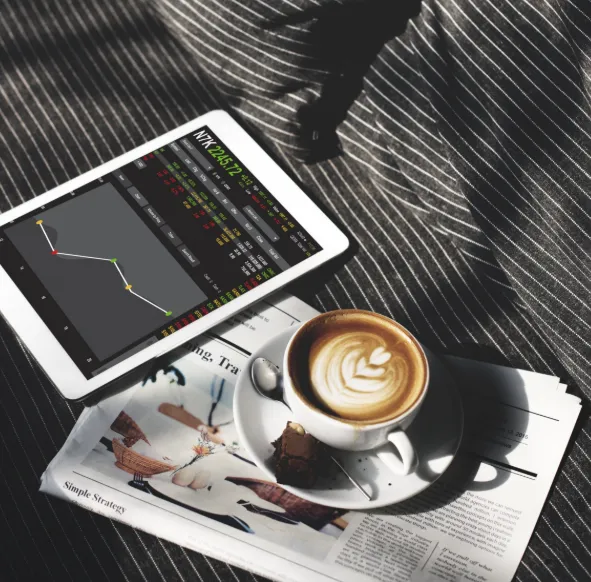Navigating the world of trading can be overwhelming for beginners, especially when it comes to choosing a strategy that fits both your goals and schedule. Two of the most common approaches—day trading and swing trading—offer very different paths to potential profits. Knowing the distinction between them is crucial for setting expectations and building a trading plan that works for you.
Let’s explore how these two styles compare, the tools they require, and the pros and cons of each.
What Exactly Is Day Trading?
Day trading involves executing multiple trades within a single market session. Positions are opened and closed on the same day, with the goal of capturing short-term price movements. Traders rely heavily on technical analysis, fast execution, and real-time data to make split-second decisions.
Since these trades are highly time-sensitive, day traders often work with large volumes and may use leverage to amplify their gains. However, this also means they face higher risk if trades go against them. Precision and discipline are essential, as the window to act is often a matter of minutes or even seconds.
Understanding Swing Trading
Swing trading, on the other hand, focuses on short- to medium-term moves. A swing trader might hold a position for several days or even a couple of weeks, aiming to profit from price “swings” within broader market trends.
Unlike day trading, this strategy doesn’t require constant attention. Swing traders spend more time analyzing patterns, technical signals, and overall momentum before making a move. It’s a more strategic, patient approach that still targets short-term profits—but without the intensity of day trading.
Key Differences Between the Two
While both methods aim to profit from price fluctuations, they differ in structure, execution, and time commitment. Here’s a breakdown:
- Timeframe: Day traders close out all positions by the end of the day. Swing traders hold positions for several days or weeks.
- Activity Level: Day trading requires full-time focus and multiple trades per session. Swing trading allows for periodic check-ins.
- Risk and Reward: Day trading involves more volatility and potential for quick gains or losses. Swing trading tends to carry less risk per trade but may result in fewer opportunities.
- Stress Factor: The fast pace of day trading can be stressful. Swing trading provides more breathing room.
Choosing the right style comes down to how much time you can commit, your tolerance for risk, and your preferred pace of trading.
A Look at the Day Trader’s Routine
A typical day trader monitors financial markets in real time, scanning for trade setups based on indicators like volume spikes, chart patterns, or news catalysts. The goal is to catch short bursts of price movement, enter the trade at just the right moment, and exit quickly.
Day traders often use strategies like scalping or momentum trading and rely on direct access trading platforms. They must also be mindful of avoiding overnight exposure, which could result in losses due to after-hours news or market gaps.
Pros of Day Trading:
- Potential for quick returns
- Multiple profit opportunities per day
- No overnight risk
Cons of Day Trading:
- High emotional and mental strain
- Greater financial risk due to leverage and volatility
- Requires full-time dedication
How Swing Traders Approach the Market
Swing traders make decisions based on larger price patterns and use technical analysis tools like moving averages, RSI, and Fibonacci retracement to time entries and exits. They may also use strategies like trend-following or breakout trading to anticipate market moves.
Because they hold positions longer, swing traders can afford to be more selective. They may spend less time in front of a screen but must still manage their trades carefully, especially during earnings seasons or major economic events.
Pros of Swing Trading:
- Less screen time needed
- Can fit around other responsibilities
- Takes advantage of broader price trends
Cons of Swing Trading:
- Exposure to overnight and weekend risk
- May miss fast-moving opportunities
- Requires patience to wait out market noise
Making the Right Choice for You
If you’re drawn to the thrill of fast action and can commit to watching the market all day, day trading may suit you. But if you prefer a more relaxed pace with time to research and analyze, swing trading might be the better fit.
Both styles require strong discipline, risk management, and the ability to remain emotionally neutral in the face of market ups and downs. Tools like reliable charting software, a robust trading platform, and access to real-time data are essential for both.
Final Thoughts
Day trading and swing trading are two distinct but effective approaches to active trading. Your choice depends on your schedule, mindset, and goals. Regardless of which path you take, success comes from preparation, practice, and using the right equipment—like a high-performance trading computer designed for speed and reliability.
With a thoughtful strategy and the right tools in place, you’ll be better equipped to navigate the challenges of the market and turn volatility into opportunity.













